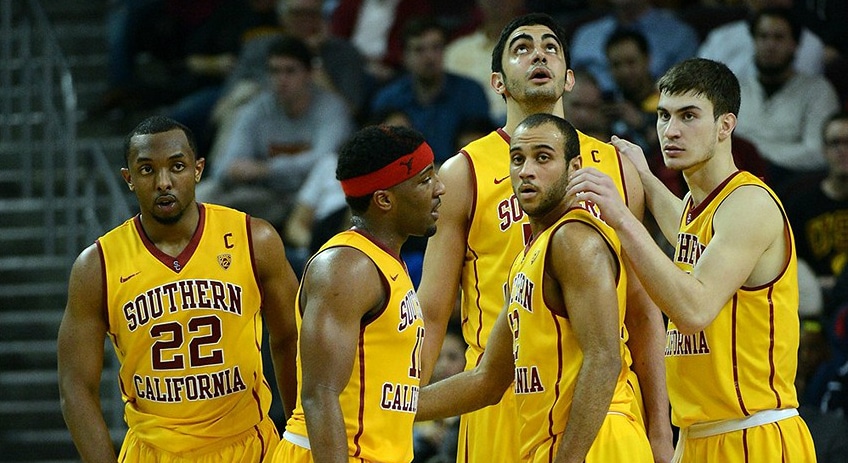
This basketball coaching article was written by USC assistant men’s basketball coach Chris Capko.
Special situations in basketball are an integral part of any game. They are generally very well-rehearsed on both sides of the basketball. For each team I scout, I will specifically clip up anything a team does from a baseline-out-of-bounds perspective or a sideline-out-of-bounds perspective. Generally, I will clip every possession a team has in the final two minutes of the game to pick up on tendencies, such as who do they run basketball plays for or what actions to do they like to run.
Many people also look at ATO’s (After Time Outs) as something that’s only important at the end of games. While emphasized at the end of games, there are opportunities to score or be scored on throughout the game. Let’s do the math. In a college basketball game, there are four media time outs per half. Each team is also allotted five timeouts of their own. Depending on how many timeouts each team has, that equates to 18 timeouts or ATO’s per game. A game can definitely be decided on these possessions.
Let’s look at ATO’s from both sides of the ball:
Taking Advantage of ATO’s on Defense
As I said, when scouting ATO’S on the defensive side of the ball, I will pay attention to every possession that a particular team has. What do they like to do on the baseline? What do they like to do on the sideline? Will they look to just inbound the ball from either position and run a set, or will they look to score immediately? Who do they like to run actions for out of these situations? These are situations that I might not even show our basketball team during scouting, but I will know as a coach when faced with this.
These are also situations you should meet as a basketball staff on. Often, you will go with your gut and what has been working to date in the game, but you also know actions that you might have trouble defending. Are they actions that you could see in an ATO?
What about practice? Have you practiced possible ATO scenarios with your team? For example, your team is up two points with five seconds on the clock. Do you switch everything or do you stay with your man? Baseline-out-of-bounds, and you are up two points with 1 second remaining (See Below). How would you defend that? There is no right answer to these scenarios. Each coach can do it at his discretion, but these situations can define a basketball game or even a season.
Taking Advantage of ATO’s on Offense
As a head basketball coach, what do you have on your sheet for these situations? What are your basketball plays, and who do you run them for when you need a basket? Remember, these are not just for the end of the game. The opposition is on a 10-0 run, and you need to stop the momentum and get a score. When I played college basketball, my coach had several “go-to” plays to run off the baseline. So, anytime we needed to stop a run, we would not call a timeout in the full court or on the side. Instead, I would dribble beneath the free throw line and call a timeout so we could run one of these basketball plays on the baseline.
As a game progresses, these situations become magnified. Do you have sideline basketball plays for a three with under 1,3,5 seconds? What about a play at the rim from either the sideline or the baseline? Who do you want to run them for? Who are your best passers, screeners, and shooters in these situations? Do you have a play that could work against a zone defense or a man when coming out of an ATO to avoid confusion? Just like any other aspect of a game, these basketball plays must be drilled, filmed, and talked about.
Again, there is no right amount of time to spend on this aspect of the game. Each coach has a different philosophy when it comes to this. I have been on both sides of it and thought there were things I would have done differently. Figure out what works for you and what your players can comprehend and live with the outcome!




2 Responses
I did not know there was this much strategy in respect to time outs.
Good sense but in Europe at lower level games there are no media time outs and no player can call a time out only the coach at a deadball but with 10 possible timeouts it is important to have pre-prepared plays for differing scenarios.